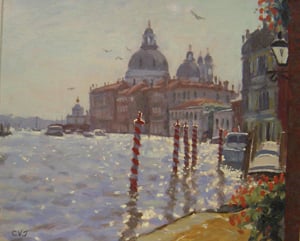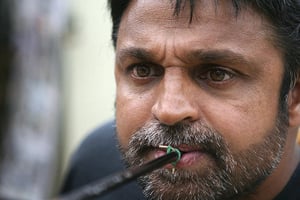Art without boundaries
After being paralysed in a car accident, Keith Jansz turned to painting with the support of the Association of Mouth and Foot Painting Artists


I began painting full-time when I lost the use of my hands and legs in a road accident in 1995, and was paralysed from the neck down. Turning to oil and pastel painting, with the added challenge of painting with my mouth instead of my hands, I was promoted to a full Membership of the Association of Mouth and Foot Painting Artists (MFPA) in 2000. As a disabled artist, it would be very difficult for me to promote my work without the support of the MFPA and virtually impossible to reach a worldwide audience. It provides me not only with an income but with the support and reputation of a long-established company. It is not a charity, something that is very important to all of us. It is a self-help organisation, run by and for members.
When I was accepted as a Student Artist in 1998 I was thrilled – this was not only my first step towards financial independence but, most importantly, it restored the self esteem and self respect that I had lost when I had my accident. Suddenly, I could see a new career and a way of contributing something, rather than simply being a lifetime burden. I was working again and valued for what I did. Being part of a group of other disabled artists was not how I had imagined it. When we get together, as we do for workshops, exhibitions and conferences, no one discusses disability – we talk about art. We all work in different ways as we have different disabilities, and we all struggle to achieve our artistic goals, just as able-bodied artists do.
Through MFPA, we have the opportunity to meet artists from around the world – this is what the MFPA founder Erich Stegmann (who was originally from Liechtenstein) had in mind, and we all owe him a huge debt of gratitude. When we travel abroad, we are treated not as a group of disabled people but as a group of professional artists. On these occasions there is always an exhibition of our work to bring to new audiences, and I am very fortunate to have my paintings displayed in the Albertina in Vienna and the Shanghai Museum of Art, something that would never have happened under my own steam.
To be completely honest, I used to believe that the success of my first solo exhibition was because people felt sorry for me. It took a while for me to realise that people were buying my paintings because they actually liked and valued them as ‘real’ works of art. Years later, even though my prices have gone up, the novelty has worn off and people are still buying my paintings, so now I know that when a buyer is buying my paintings, they actually appreciate my artistic merits.
That said, many people relate to my situation and perhaps feel a connection to my work because of their own struggles – the same reason perhaps that people are drawn to painters such as Van Gogh. When able bodied professional artists see my work ‘in the flesh’, rather than just as reproductions, they understand and appreciate the hard work that goes into producing my paintings – they know the struggles only too well.
To date I have not sold my work through galleries, preferring to hold my own exhibitions and give a large percentage of the sales, which would normally be a gallery fee, to the charities I support – notably the Spinal Injuries Association, Motivation, Back-Up and Headway.
On a practical basis, as a permanent wheelchair user, I often find that I am unable to access many galleries, which would of course stop me having an exhibition were I to be asked! As far as the public galleries are concerned, they usually have very good access, and I find that regular doses of the Old Masters inject me with renewed awe and inspiration.
Join the Discussion
You must be logged in to post a comment.